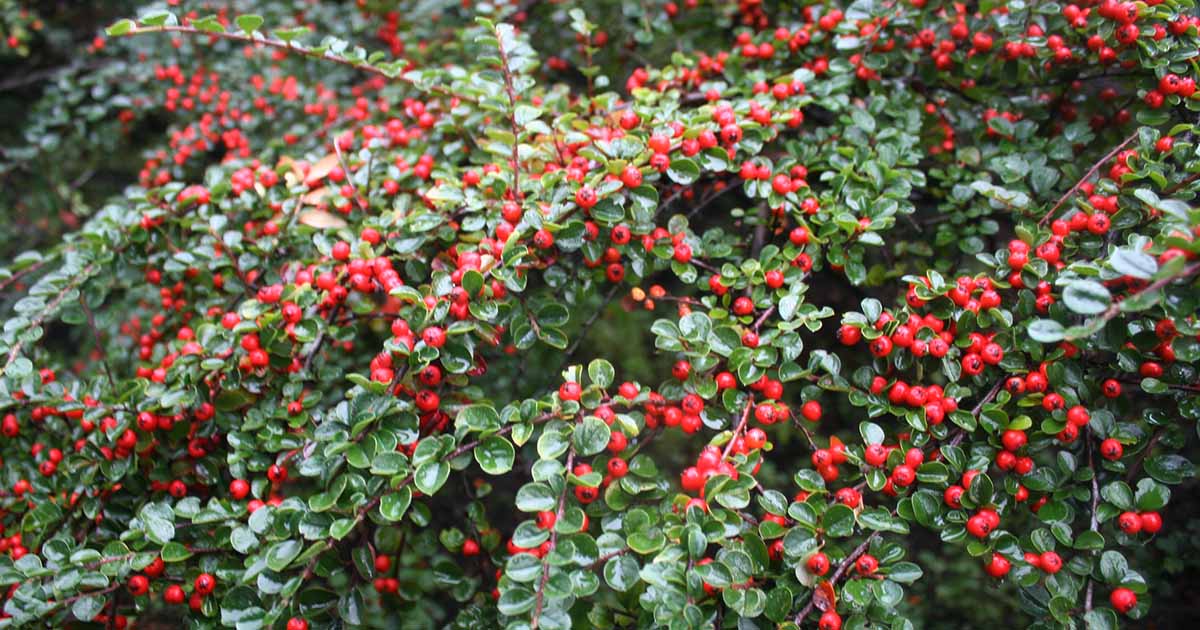
Are you familiar with Cotoneaster? These intriguing plants belong to the Rosaceae family and are renowned for their beauty and resilience. Whether you’re a gardening enthusiast or simply curious about the natural world, learning about Cotoneaster is sure to captivate you.
In this article, we will delve into the fascinating world of Cotoneaster and uncover 15 intriguing facts about these plants. From their origins to their various species and impressive features, Cotoneaster offers so much to explore and discover. So, let’s embark on a journey through the rich tapestry of Cotoneaster as we unveil the hidden wonders of this extraordinary plant family.
Key Takeaways:
- Cotoneaster is a diverse and hardy plant that produces beautiful flowers and vibrant berries, attracting wildlife and providing excellent groundcover for your garden.
- With over 300 species, Cotoneaster is not only easy to care for but also rich in symbolism and historical significance, making it a valuable addition to any outdoor space.
Cotoneaster is a versatile genus of plants.
Cotoneaster is a diverse genus of plants that belong to the Rosaceae family. It encompasses over 300 species, ranging from evergreen shrubs to deciduous trees, and even groundcover plants.
There are many varieties of Cotoneaster.
Cotoneaster plants come in various forms, such as low-growing groundcovers, sprawling shrubs, and upright trees. This versatility makes them suitable for different landscape needs.
Cotoneaster produces attractive flowers.
When in bloom, Cotoneaster displays clusters of beautiful white or pink flowers, which add a touch of elegance to any garden.
Most Cotoneaster species bear colorful berries.
One of the most captivating features of Cotoneaster plants is their abundance of vibrant berries. These berries can range in color from red and orange to black and are highly attractive to birds.
Cotoneaster is a hardy plant.
Cotoneaster is known for its ability to thrive in a wide range of climates and soil conditions. It is a hardy plant that can withstand harsh winters and tolerate both drought and poor soil fertility.
Cotoneaster is often used for erosion control.
Thanks to its dense foliage and extensive root system, Cotoneaster is commonly utilized in landscaping projects to prevent soil erosion.
Cotoneaster provides excellent groundcover.
Low-growing species of Cotoneaster are frequently employed as groundcover plants due to their ability to quickly fill in empty spaces and suppress weed growth.
Cotoneaster can attract wildlife to your garden.
The flowers and berries of Cotoneaster are a valuable source of food for birds, butterflies, and other pollinators, helping to create a vibrant and ecologically diverse garden.
Cotoneaster is easy to care for.
Most Cotoneaster species are relatively low-maintenance and require minimal pruning and watering once established in the garden.
Cotoneaster is rich in symbolism.
In Chinese culture, Cotoneaster is believed to bring good fortune and abundance, making it a popular choice for gifting during festive occasions.
Cotoneaster has medicinal properties.
Some Cotoneaster species have been used in traditional medicine to treat various ailments, such as digestive disorders and skin conditions.
Cotoneaster can be used in bonsai cultivation.
The compact size, dense foliage, and delicate flowers and berries of Cotoneaster make it an excellent choice for bonsai enthusiasts.
Cotoneaster can enhance privacy in your outdoor space.
Taller species of Cotoneaster can be strategically planted to create natural privacy screens, shielding your garden from prying eyes.
Cotoneaster has historical significance.
Cotoneaster plants have been mentioned in ancient Chinese literature and have been cultivated for centuries in various parts of the world for their beauty and practical uses.
Cotoneaster is a valuable food source for wildlife.
The berries of Cotoneaster provide nourishment to a wide range of wildlife, including birds, bees, and small mammals, contributing to the overall ecological balance.
Conclusion
In conclusion, cotoneaster is a fascinating plant that offers many interesting facts to explore. From its wide range of species to its versatile uses in landscaping and its ability to attract wildlife, there is no doubt that cotoneaster deserves its place in the plant world. Whether you’re a gardening enthusiast or simply a nature lover, cotoneaster is a plant worthy of your attention. So, next time you come across a cotoneaster, take a moment to appreciate its intricacies and the remarkable role it plays in the ecosystem.
FAQs
1. What are the different species of cotoneaster?
There are over 500 known species of cotoneaster, with varying sizes, shapes, and growth habits. Some popular species include cotoneaster horizontalis, cotoneaster dammeri, and cotoneaster lacteus.
2. Are cotoneaster plants easy to grow?
Yes, cotoneaster plants are generally easy to grow and care for. They thrive in well-drained soil and prefer full sun to partial shade. Regular watering and pruning will help maintain their health and appearance.
3. Can cotoneaster be used for landscaping purposes?
Absolutely! Cotoneaster is a popular choice for landscaping due to its attractive foliage, colorful berries, and ability to tolerate various soil conditions. It can be used as a ground cover, hedge, or focal point in a garden.
4. Do cotoneaster plants attract wildlife?
Yes, cotoneaster plants are known to attract birds, bees, and other beneficial insects. The berries they produce serve as a valuable food source during the winter months when other food options are scarce.
5. Are cotoneaster berries edible for humans?
While some species of cotoneaster produce berries that are edible, it is important to exercise caution. It is best to do thorough research and consume only the berries of known edible species.
6. Can cotoneaster be grown in containers?
Yes, cotoneaster can be successfully grown in containers, making it a suitable choice for balcony or patio gardens. Just ensure proper drainage and regular watering to prevent waterlogged roots.
7. Are cotoneaster plants prone to any diseases or pests?
Generally, cotoneaster plants are resilient and not prone to major diseases or pests. However, they can be susceptible to aphids, fire blight, or powdery mildew, especially in humid conditions. Regular monitoring and appropriate measures can help prevent and treat these issues.
8. Can cotoneaster be propagated from seeds?
Yes, cotoneaster can be propagated from seeds. However, keep in mind that it may take longer for the plant to establish and reach maturity compared to other propagation methods such as cuttings.
Cotoneaster's versatility in landscaping is truly remarkable. If you're looking for a hardy ground cover, consider exploring the intriguing facts about Ajuga. Cotoneaster and many other shrubs offer a wide range of options for enhancing your outdoor space. Discover more fascinating landscaping facts to elevate your garden's appeal.
Was this page helpful?
Our commitment to delivering trustworthy and engaging content is at the heart of what we do. Each fact on our site is contributed by real users like you, bringing a wealth of diverse insights and information. To ensure the highest standards of accuracy and reliability, our dedicated editors meticulously review each submission. This process guarantees that the facts we share are not only fascinating but also credible. Trust in our commitment to quality and authenticity as you explore and learn with us.


